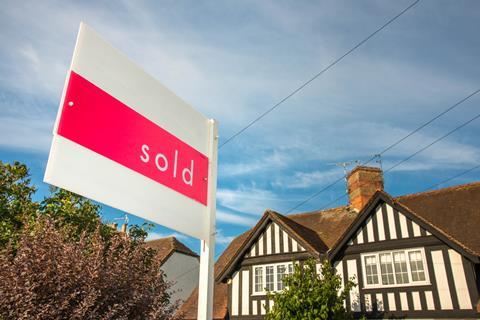HMRC data appear to show full market recovery following 21% leap in transactions in August
The number of homes sold in the UK was back at pre-pandemic levels in September, according to the latest official data.
Figures from HM Revenue & Customs (HMRC) showed that sales jumped by 21% in August compared with the previous month, seasonally adjusted, to a level just 0.7% lower than the figure recorded in September last year.

This is the first time the volume of transactions has approached anything like a normal level since the start of the pandemic.
The numbers come as official house price data shows a 0.5% rise in house prices in August, putting prices up 2.5% year-on-year.
Both pieces of official data corroborate recent reports from mortgage lenders and estate agents of a surge in housing market activity since the removal of lockdown restrictions on buying and selling homes. This was further boosted by the chancellor’s stamp duty cut in July.
The HMRC transactions data appears to show an almost complete recovery in house sales since the onset of the pandemic, following an initial drop of around 60% in transactions. It said just over 100,000 homes were sold in the month, just 0.7% down year-on-year, seasonally adjusted.
However, the HMRC figures also showed the extent of “lost” transactions prompted by the crisis. The number of sales in the year to date was around 200,000 below the same figure for last year.
Lucian Cook, head of residential research at Savills, said the data appeared to show that concerns over the underlying economic backdrop had been trumped by an increased desire to move following the experience of covid-19. However, he said the number of sales that can be completed beforr the end of the stamp duty holiday in March next year would be limited by the capacity of mortgage lender and solicitors.
He said: “The number of deals that have been agreed recently suggest that these figures will rise further in coming months.
“By how much really depends on the capacity of solicitors and mortgage providers to process the pipeline of agreed sales. That will limit the number of sales able to be completed by Christmas and, unless something changes, the stamp duty deadline at the end of March.”
The Office for National Statistics’ house price index, which operates with a two-month lag but is seen as more reliable than mortgage lenders’ numbers because it is based on completed transactions, saw average prices rise 0.5%, seasonally adjusted, in August to a record high of 239,000. This followed a fall of the same amount in July, also seasonally adjusted.
The year-on-year rise of 2.7% was up from a 2.1% increase recorded in July. The ONS said that, because of the length of time taken to complete a house purchase, these figures were likely to largely reflect sales made prior to the announcement of the stamp duty holiday.
David Westgate, group chief executive of Andrews Property Group, said the rise was no surprise, reflecting the post-lockdown surge in demand. He added: “September is likely to see an even sharper upswing in average annual completion values as by that point we will start to see the impact of the stamp duty holiday announced in July.”
However, he added that the market had started to “cool-off” since then, with lenders already becoming more conservative.










No comments yet